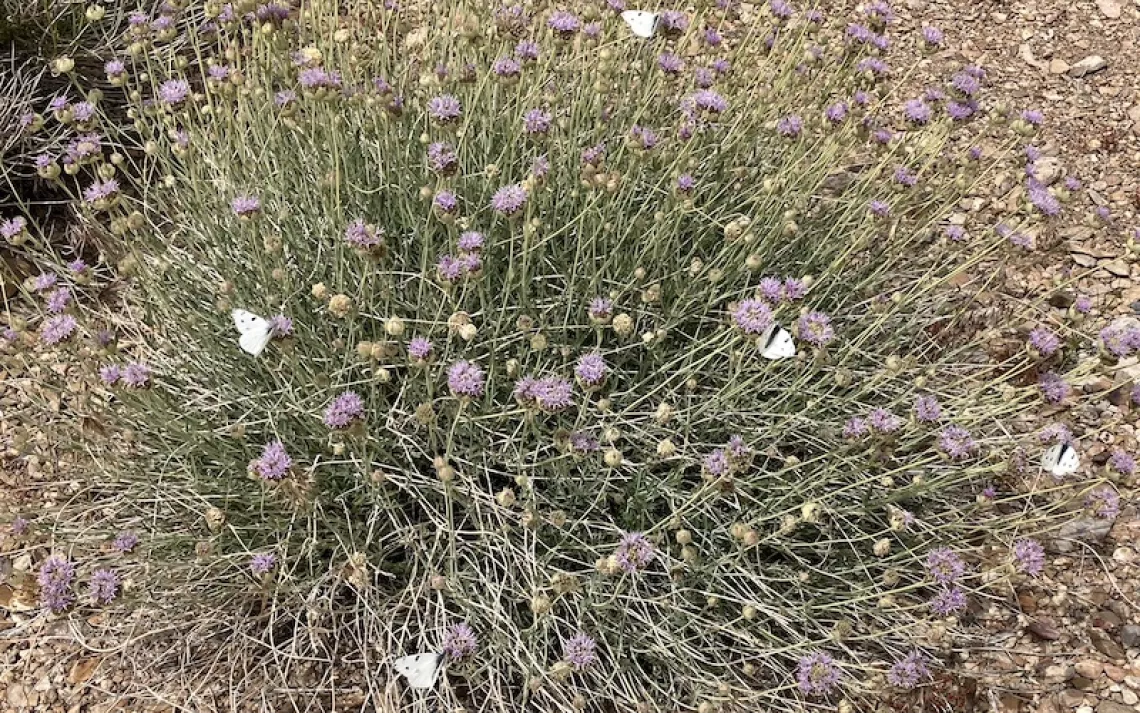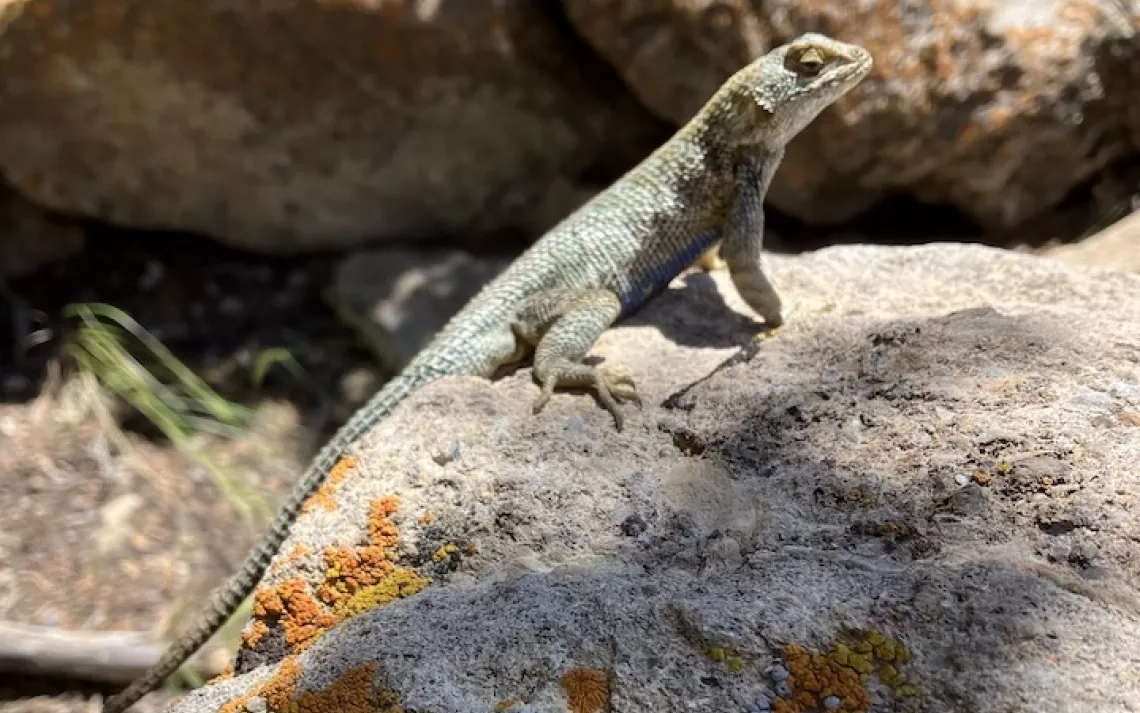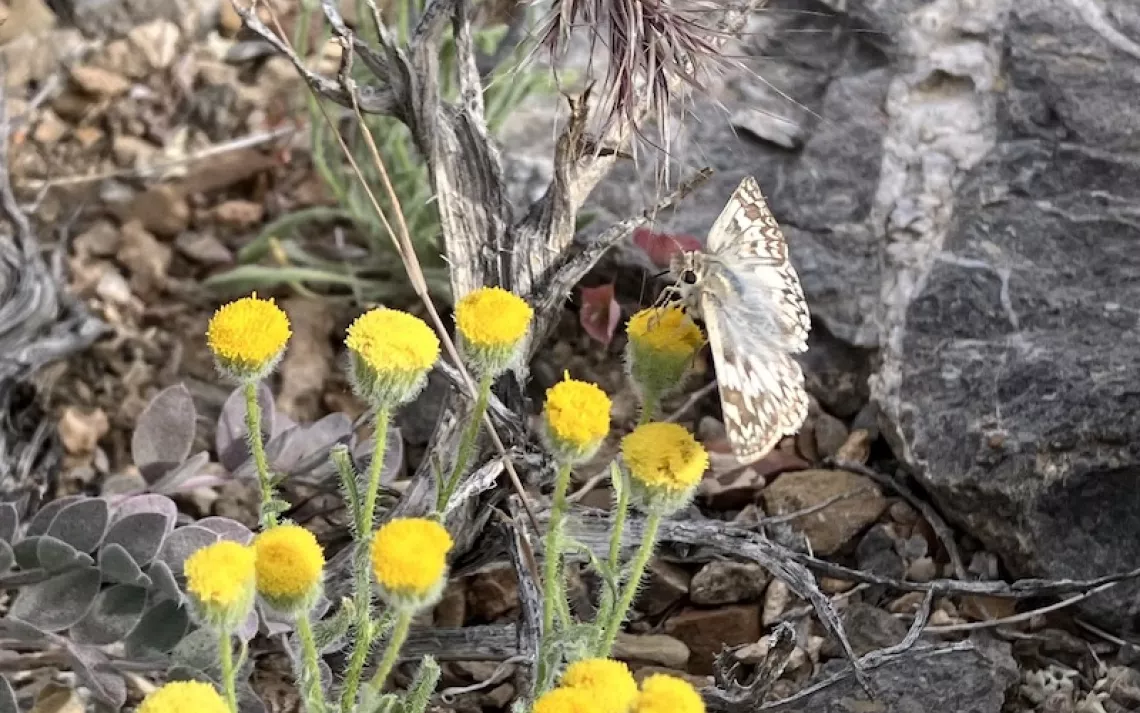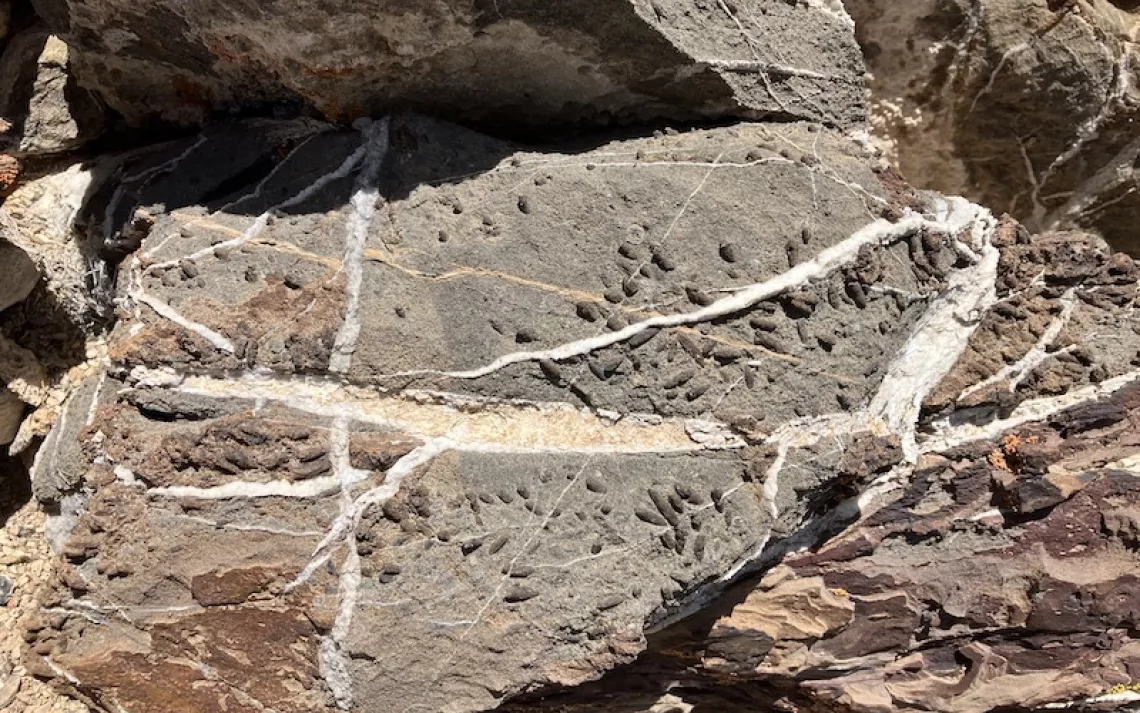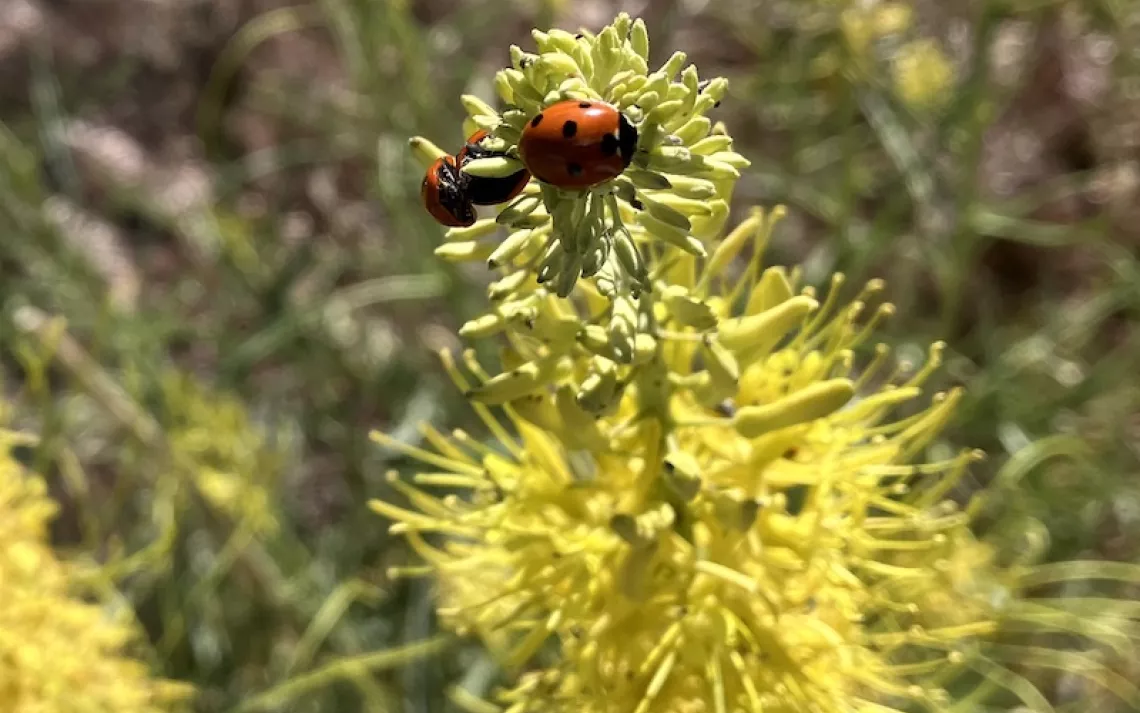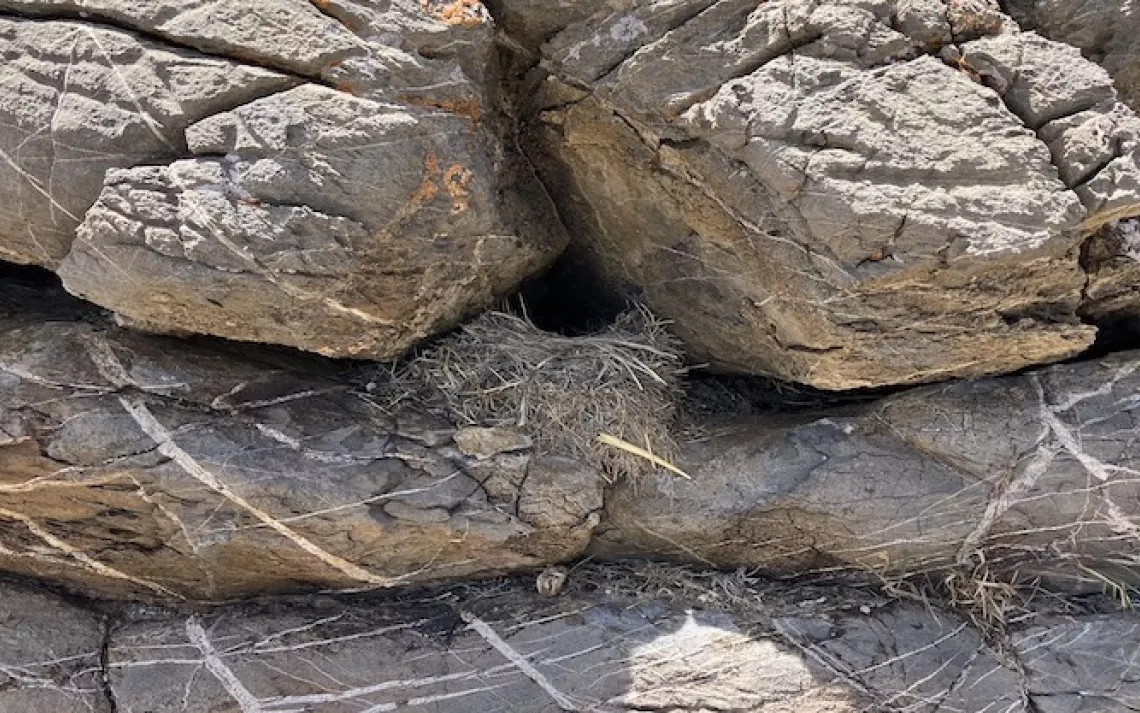By: Lynn Boulton
Save the Mesa!

On the way to the mesa, the Joshua Trees were in a sea of trumpet buckwheat. It was just stunning and worth saving!
I was lucky to be out at Conglomerate Mesa for a few days while it was in bloom this past June. The mesa was alive with Rock Wrens, butterflies, snakes, lizards, flowers in bloom, flowers just past their peak, and thousands of grasshoppers!! Check out the wildlife at the mesa!
Mojave Precious Metals, a subsidiary of K2 Gold has submitted a plan of operations requesting permission to drill at 30 sites in a remote, roadless area in the Southern Inyo Mountains at Conglomerate Mesa. The comment period is open until October 16, 2023. Please submit your comments urging the BLM to only allow helicopter access. "Temporary" roads were put in by BHP in the late 1990's so they could drill at 10 locations. The road scars are still very visible today, 25 years later. Those roads brought in invasive species: Cheatgrass, Russian thistle and Halogeton. Reopening those roads will spread those noxious weeds and rip out many flowering plants. Some of those plants that will be ripped out have special or protected statuses.
If you want to help, please sign up for the Conglomerate Mesa newsletter to receive updates and information on rallies, educational events i.e., Gold 101, and how to comment. For more information go to Protect Conglomerate Mesa.





